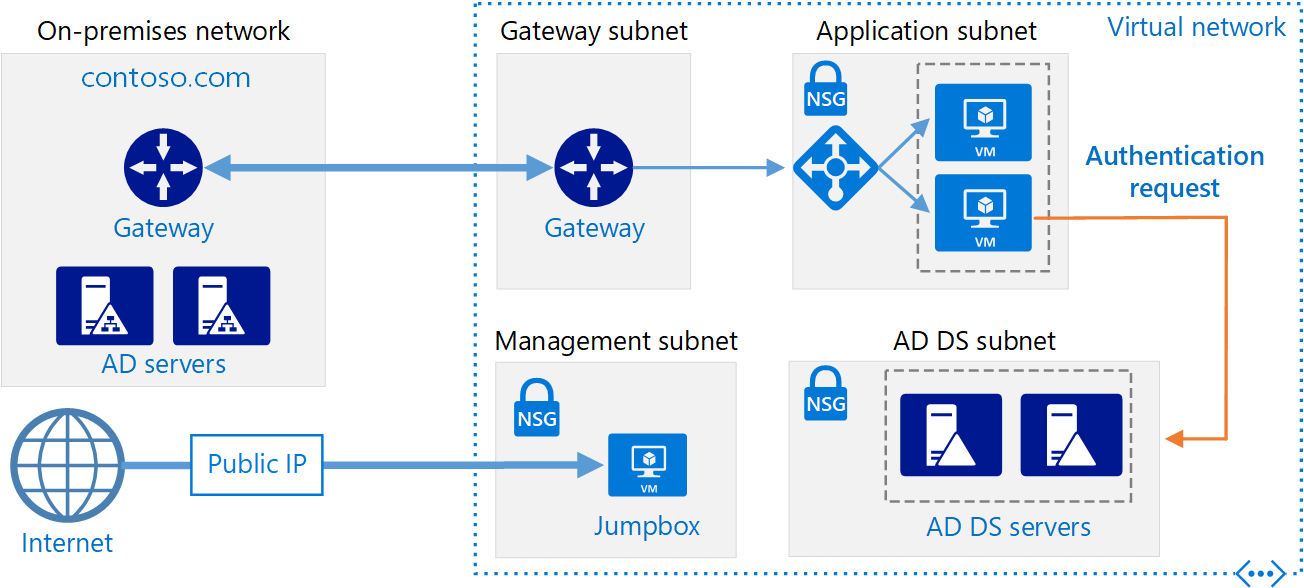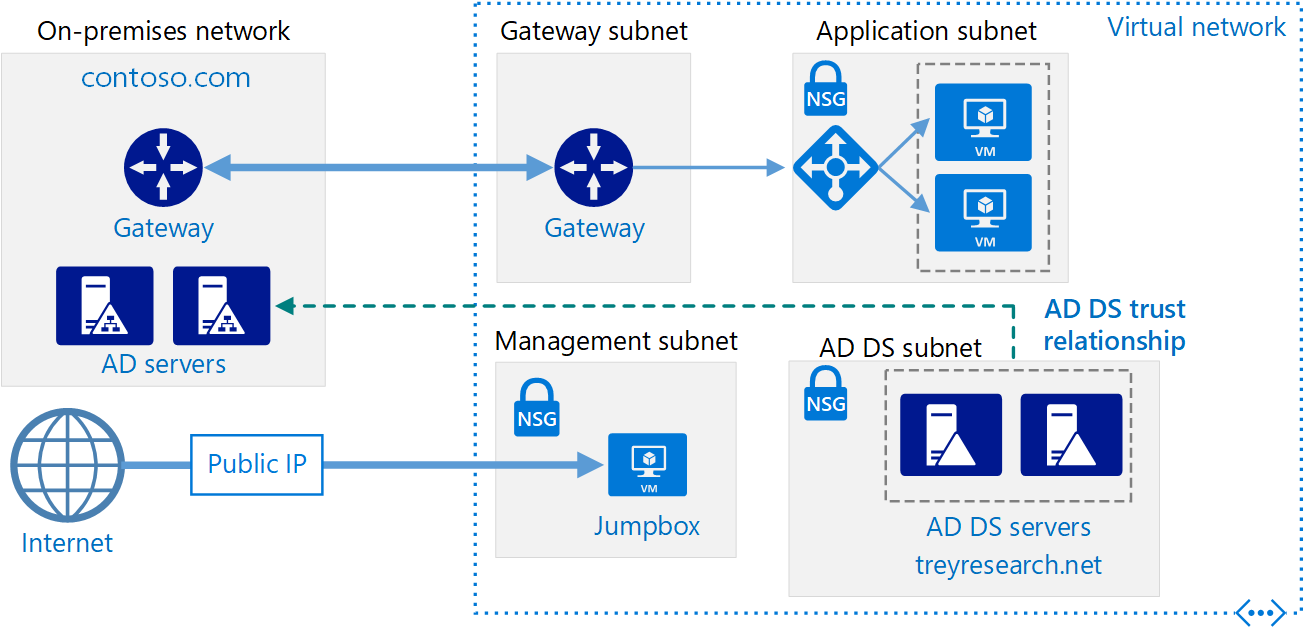Hybrid identity
Tailwind Traders uses Active Directory Domain Services (AD DS) as its on-premises identity provider on its on-premises network environment since it migrated from Windows NT 4.0 in the early 2000s. Many existing Tailwind Traders applications have a dependency on Active Directory. Some of these applications have a simple dependency on Active Directory as an identity provider. Others have deeper dependencies, such as complex Group Policy requirements, custom domain partitions, and custom schema extensions.
As Tailwind Traders starts to move some resources and develop new applications in Azure, the company wants to avoid creating a parallel identity solution. They don't want to require separate sign in information for on-premises and cloud resources.
In this unit, you learn about the different ways to implement hybrid identity.
Deploying domain controllers to Azure
The simplest way to provide the same AD DS environment in Azure that an organization has on-premises is to:
Deploy a pair of AD DS domain controllers on a subnet on an Azure virtual network.
Connect that virtual network to the on-premises network.
Configure that subnet as a new AD DS site, as shown in the following image.
Another option is to configure the cloud-hosted AD DS domain as a child domain of the on-premises domain's forest. Another option is to configure the AD DS domain controllers running in the cloud as a separate forest that has a trust relationship with the on-premises forest. The following image shows this resource forest topology.
Organizations that deploy domain controllers on virtual machines (VMs) in Azure can then deploy workloads that require line of sight to a domain controller. They can make the deployment as long as the workloads are on the same Azure Virtual Network subnet where their domain controller VMs are deployed. This model of a hybrid cloud is conceptually simple for many organizations because Azure datacenters are treated as a remote Active Directory site.
For Tailwind Traders, extending its on-premises Active Directory domain or forest into Azure might be sufficient, depending on application requirements. The drawback in deploying this option is that VMs that are running all the time, in the way that domain controllers must, have an associated ongoing expense.
What is Microsoft Entra Connect?
Microsoft Entra Connect (formerly Azure AD Connect) allows organizations to synchronize the identities present in their on-premises Active Directory instance to Microsoft Entra ID (formerly Azure AD). This method allows you to use the same identity for cloud resources and on-premises resources. Microsoft Entra Connect is most often used when organizations adopt Microsoft 365. They use it to permit applications such as Microsoft SharePoint and Exchange running in the cloud to be accessed via on-premises applications.
If Tailwind Traders plans to adopt Microsoft 365 technologies such as Exchange Online or Microsoft Teams, it needs to configure Microsoft Entra Connect to replicate identities from its on-premises AD DS environment to Azure. If the company also wants to use on-premises identities with applications in Azure, but doesn't want to deploy AD DS domain controllers on VMs, it also needs to deploy Microsoft Entra Connect.
What is Microsoft Entra Domain Services?
You can use Microsoft Entra Domain Services to project a Microsoft Entra domain onto an Azure virtual subnet. When you employ this configuration, services like domain join, Group Policy, Lightweight Directory Access Protocol (LDAP), and Kerberos and NTLM authentication become available to any VM deployed on the subnet.
Microsoft Entra Domain Services allows you to have a basic managed Active Directory environment available to VMs without worrying about managing, maintaining, and paying for the VMs that run as domain controllers. Microsoft Entra Domain Services also allows you to use on-premises identities through Microsoft Entra Connect to interact with VMs running on a specially configured Azure Virtual Network subnet.
One drawback to Microsoft Entra Domain Services is that the Group Policy implementation is basic. It includes a fixed set of policies and offers no ability to create Group Policy Objects (GPOs). Even though the identities used on-premises are available in Azure, any policies configured on-premises aren't available.
For Tailwind Traders, Microsoft Entra Domain Services provides a good middle ground for hybrid workloads. It enables domain-joined identity usage and a substantial amount of Group Policy configuration. But it doesn't support applications that require complex Active Directory functionality such as custom domain partitions and schema extensions.

